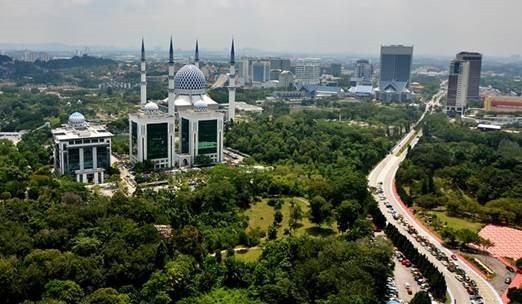
PETALING JAYA: Selangor’s economic value cannot be understated, as the state contributed 24.8% of the country’s national gross domestic product (GDP) in 2021.
MIDF Research, in a thematic report today, said that a compound annual growth rate (CAGR) of more than 6.5% for the state could lead its contribution levels to breach the 25% threshold.
“In 2015, Selangor contributed 22.8% to the national GDP. After half a decade, the contribution rate has increased to 24.8% by 2021,” it said.
This already surpassed the 12th Malaysia Plan target rate of 23.6% contribution to national GDP by 2025.
Prior to the Covid-19 pandemic crisis, the 2016-2019 annual average growth rate for Selangor was 6.4%. In 2020, the state economy contracted by 5.2% but recovered strongly by 5% in the following year.
“Steady economic expansion in Selangor while other states grow at a relatively slower pace are (among) the factors contributing to the GDP ratio surge,” said MIDF.
Trade grew 13.8% in 2022 compared to the previous year, lagging behind other states such as Johor (41%), Kelantan (149.9%) and Sarawak (52.6%).
“We opine the slight reduction of Selangor’s total trade share is mainly due to faster expansion rate in other states especially those associated with primary sectors,” it said.
Selangor’s growth has been grounded in the services and manufacturing sectors, supporting over 50% and 30% of the state’s economy since 2015.
However, a strong construction and retail sub-sector ensure the economic sectors are relatively diverse. This has acted as a buffer from global market uncertainties, as the unemployment rate is typically lower than the national average.
This is in line with the fact that a fifth of the country’s population (19.8%) resides in the state, and as such it provides 23.4% of the country’s total employment.
Wages rising to keep up with higher inflation
While the state has benefited greatly from the stable economic activity, increasing population size and density have contributed to higher inflation, particularly in food prices.
The average annual inflation rate for the 2015-2022 period for Selangor is 2.1% higher compared to Malaysia (1.8%), Sarawak (1.3%) and Sabah (1%).
“In comparison, Sabah’s food inflation in particular is not as high as in other areas, thanks to better food supply,” said MIDF.
The agricultural sector covers a larger share in Sabah’s economy at 15.9% of its GDP, 11% in Sarawak and 7.1% of Malaysia’s national GDP in 2021. Meanwhile, agriculture contributes a menial 5% to Selangor’s economy.
Nonetheless, wages in the state have rebounded and are creeping back up to pre-pandemic levels.
The median wage and salary for Selangor was RM2,884 per month in 2021 (2020: RM2,725), only 2.4% less than the pre-pandemic level of RM2,956 in 2019.
This growth was greater than the median wage rebound on a national level, which saw improvements to RM2,250 in 2021. However, it was still 7.9% lower than the RM2,442 median wage in 2019.
As the inflation rate in Selangor is higher than the national average, real wage growth rate was only 3.1%, about half of the 6.6% rate achieved for Malaysia in 2021.
“High inflation poses a downside risk to Selangor’s wage growth, particularly reducing real wage growth, disposable income and purchasing power,” said MIDF.
Under the Rancangan-1 Selangor (RS-1) framework, a number of broad goals are set for the state’s economy, social welfare and sustainability.
RS-1 maps out the state government’s development plan towards achieving a “smart, liveable and prosperous state” for the next five years from 2021.
The target for household median income in Selangor under RS-1 is to reach RM9,290 per month by 2025 (2019: RM8,210).
Key driving areas highlighted by the research house include the development of Carey Island, and the Selangor International Aero Park in Subang.
Additionally, the move towards a low-carbon city outlines the building of integrated solid waste management centres and a waste-to-energy treatment plant, with the involvement of local authorities.
“The themes, strategies and targets will shape the new landscape for the state economy and be beneficial for Malaysia’s macroeconomic performances and financial market,” said MIDF.
Source: https://www.freemalaysiatoday.com/category/business/2023/04/05/trailblazing-selangor-could-soon-contribute-more-than-25-of-national-gdp/

